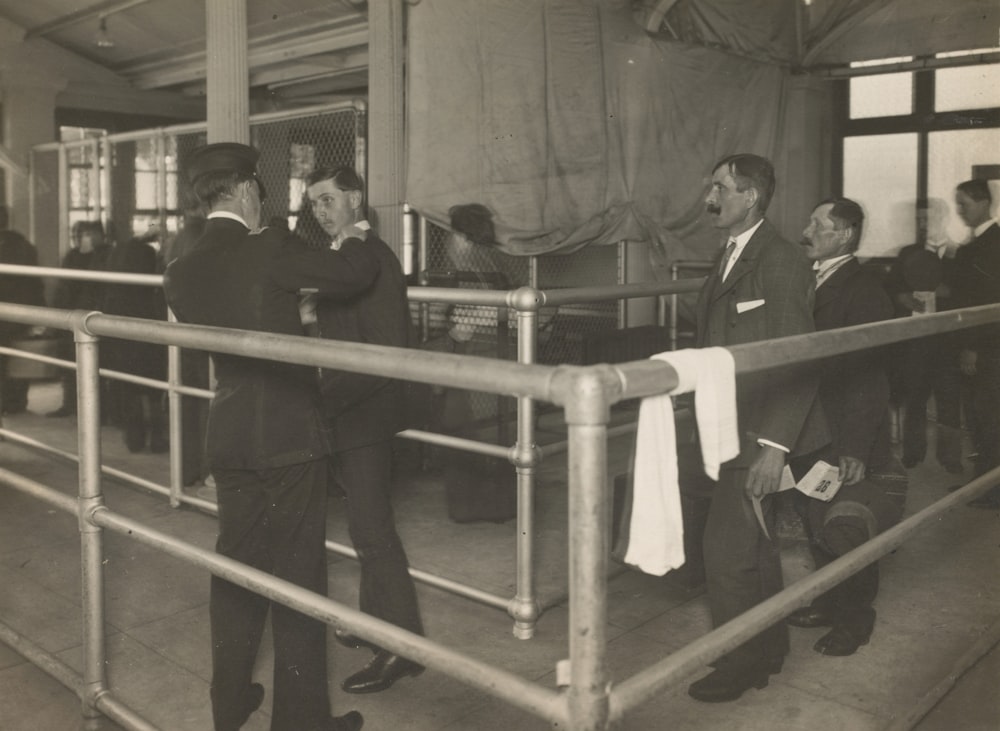A brief history of immigration restrictions in America and how they have changed over time.
If you are an American citizen, there’s a pretty strong chance that you are descended from immigrants. Different generations of immigrants have had to face their own unique sets of problems, but many would find today’s immigration system virtually unrecognizable.
Barriers to Entry
While the 18th and 19th centuries posed physical barriers to immigration, such as the Atlantic Ocean, it turns out that many of these immigrants did not face any legal barriers to entry into the United States once they arrived. In fact, it wasn’t until 1875 that the U.S. enacted its first restrictive immigration statute, which banned entry to criminals, and later included people with contagious diseases, anarchists, beggars, polygamists, and traffickers of prostitutes. Up until 1875, the only action a person had to take in order to immigrate lawfully was to show up.
Starting in 1882 and continuing through 1943, Chinese laborers were banned from immigrating to the United States, and from 1917 through 1952, the U.S. banned immigrants from most Asian countries.
The 1996 Illegal Immigration Reform and Immigrant Responsibility Act increased enforcement with mandates to build fences on the Southwest border. Under the 2002 Homeland Security Act, the duties of the U.S. Immigration and Naturalization Service (INS) were transferred to the newly created Department of Homeland Security (DHS), which now includes Customs and Border Protection (CBP), Immigration and Customs Enforcement (ICE), and U.S. Citizenship and Immigration Services (USCIS). Created in response to 9/11, the DHS is actually the United States’ youngest cabinet department.
Barriers to Citizenship
Historically, one of the largest barriers to citizenship was race. Under the 1790 Naturalization Act, a free white person could naturalize after 2 years of residence if they possessed “good moral character.” This act formally barred citizenship to any non-white person.
After the Civil War, the Naturalization Act of 1870 allowed people of African descent to naturalize. It wasn’t until the 1952 that race was removed as a legal exclusion to immigration and naturalization.
Now, becoming a United States citizen involves an extensive ten-step process that includes filling out form N-400, completing a personal interview, and passing the U.S. Naturalization Test.
History of Deportation
In the past, deportation was limited to those who posed a serious danger to society. The 1798 Alien Friends and Enemies Acts were the first acts to authorize deportation of immigrants and included those who were either deemed dangerous to the U.S. or were citizens of a hostile nation during wartime. A version of the Alien Enemies Act is still in effect today. The 1882 Chinese Exclusion Act allowed the deportation of unauthorized Chinese immigrants.
Now, grounds for deportation apply to people who violate any law, including non-violent crimes and misdemeanors, and even those who fail to fill out a change of address form. From 1996 through today, policies enforcing deportation have been widespread, with roughly 5.77 million people deported between 1997 and 2016.
Introduction of Quotas
The concept of quotas is relatively new. The 1921 Emergency Quota Act was the first to create nationality-based immigration quotas with a cap of 350,000 that did not apply to countries in the Western Hemisphere. In 1924, the cap was almost cut in half at 165,000, and only people eligible to become citizens (whites and people of African descent) were allowed entry into the U.S.
Following the Chinese Exclusion Repeal Act of 1943, roughly 105 Chinese immigrants were allowed to immigrate each year. In 1952, Asian countries were granted a minimum quota of 100 visas per year.
In 1965, a new system was created favoring skilled immigrants and family reunification over quotas. The system also imposed the very first limits on immigration from the Western Hemisphere.
Now, USCIS often places a cap on the number of visas available, and different skillsets and personal situations are prioritized based on the availability of certain types of visas, making the U.S. immigration system one of the most selective and difficult to navigate in the world.

